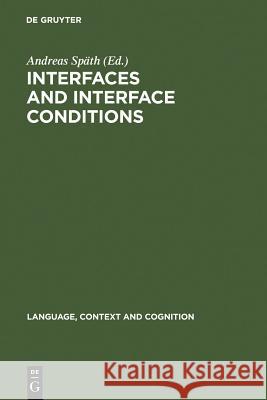Interfaces and Interface Conditions » książka
Interfaces and Interface Conditions
ISBN-13: 9783110195477 / Angielski / Twarda / 2007 / 398 str.
The volume contains articles that focus on the interface between linguistic and conceptual knowledge. The issues addressed in the volume include the preconditions of every level of the language system that are required for the transformation of linguistic information into conceptual representations. In accordance with Chomsky's Minimalist language model, the language system is embedded into the performative systems where language is a part of the cognitive competence of human beings, i.e. system of articulation and perception (A/P) and the conceptual-intentional system (C/I). During the formation of linguistic structures, every performative system obtains well-formed representations as its input information. The articles of the volume show how interface conditions determine the linguistic representations on each level of the linguistic system. Interface conditions result in requirements for the ordering of linguistic elements. The syntactic transformation achieves a point, where the linguistic structure formation branches to two distinct representational levels. Both levels deliver instructions for the systems of performance A/P and C/I. Linearization takes place on the syntactic surface of a sentence. The linearization of linguistic elements is manifest at the derivational point of Spell-out and also on the level of the phonological form (PF). This means that on the one hand, linearization is relevant to the phonetic aspect of linguistic expressions, and on the other hand, the interpretation of linguistic utterances is based on hierarchical structures. On the level of Logical Form (LF) all operations apply which don't have any influence on the linear order in overt syntax. In addition they affect the generation of hierarchical structures. The structure obtained on LF is the representational format of the semantic form of a sentence.











